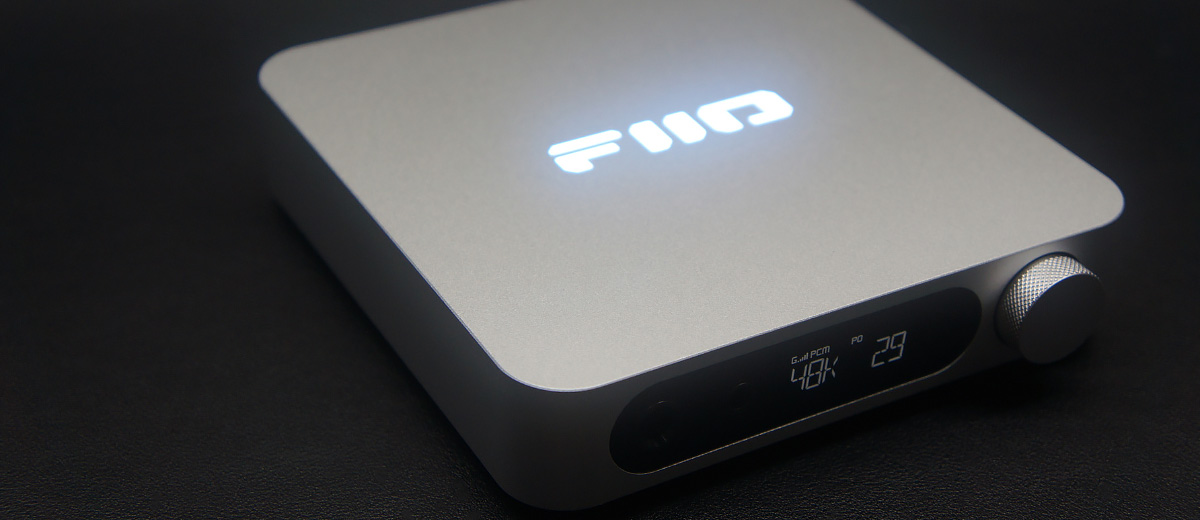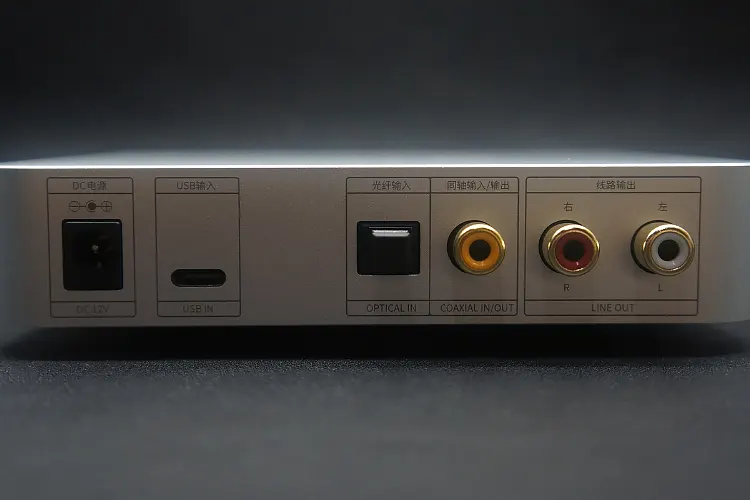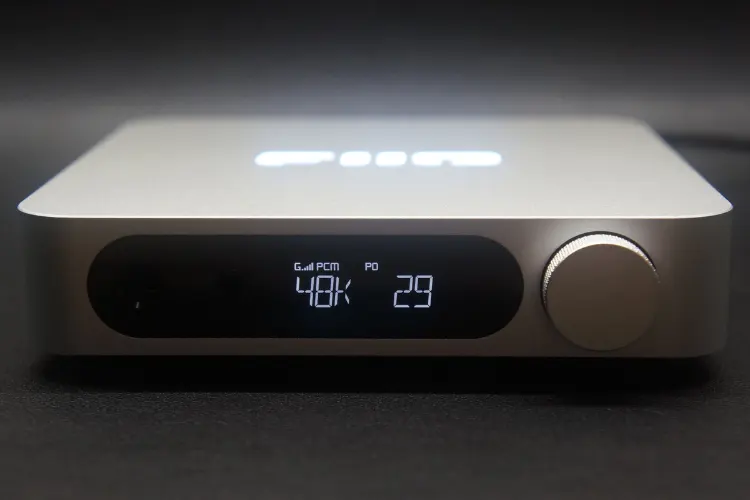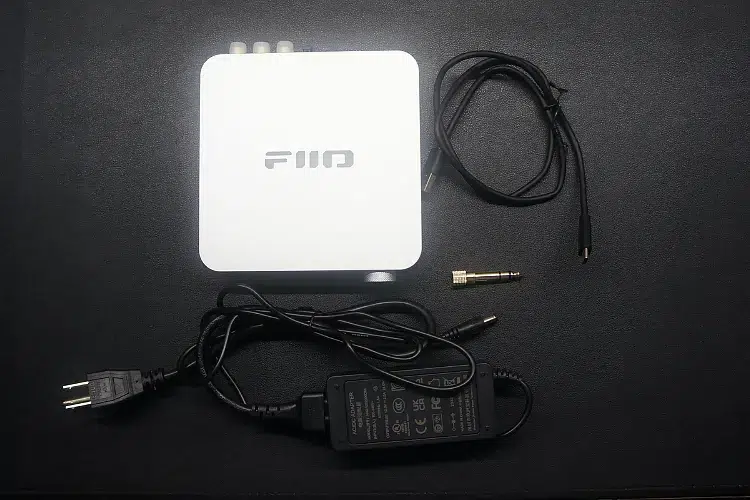Today’s feature is a review of the new FiiO K11, which is a compact desktop integrated DAC and 1.4W-capable headphone amplifier with pre-out capability. It is priced at $129.99.
Disclaimer: This was sent to us as a sample in exchange for our honest opinion. Headfonics is an independent website with no affiliate links or services. We thank FiiO for its support.
You can click here to learn more about the FiiO audio products we have previously assessed on Headfonics.
Note, that this post follows our current scoring guidelines which you can read in more detail here.
The FiiO K11 was a bit of a surprise launch for us here at Headfonics.
Looking something more like the audio sibling of an Apple Mac Mini, this low-profile balanced desktop DAC and headphone amplifier is priced at an extremely competitive $129.99 and sits just below the likes of the K5 and K5Pro ESS.
The K11 seems to be aimed squarely at the likes of Topping and SMSL who have been gobbling up the first-time upgrader market with their wide range of affordable compact desktop DAC/Amps.
So, what has FiiO managed to squeeze into this price point? Let’s find out in today’s review.
Tech Highlights
The K11 is an integrated DAC and headphone amplifier equipped with a Cirrus Logic CS43198 DAC chip and dual SGM 8262 amplifiers to deliver a clean and detailed sound with low distortion and noise. 32-bit/384kHz PCM and DSD up to DSD256.
With this AMP and DAC configuration, the K11 can deliver up to an impressive 1400mw @32 ohms via its balanced output, and a more modest but very capable 520mw @32 Ohms via its SE output.
This level of power output opens a world of harder-to-drive full-sized headphones, at a relatively affordable price.
The unit is also able to fully interface with Windows 10 and newer computers without the need for additional drivers. This plug-and-play functionality is also compatible with gaming consoles such as the Nintendo Switch and the PlayStation 5.
Design
The K11 has a sleek and minimalist design that fits well on any desktop setup. The body is made of aluminum alloy and has a smooth matte finish. This gives it a luxurious yet utilitarian appeal that I quite appreciate.
The K11 is available in two colors: obsidian black and midnight silver, with our review unit being the midnight silver variant.
The front panel has a large volume knob that also serves as a multifunction button, a 4.4mm balanced output, and a 6.35mm single-ended output.
Next to it is a VA LED Panel used to display vital information such as the volume level and playback details. The back panel has a USB Type-C input, an optical input, a coaxial input, and an RCA line-out.
Coming in at 143 x 32 x 100 mm with a weight of 350g, the unit’s compact chassis easily fits even in cramped dorm room desk setups.
The top of the unit is dominated by a large, light-up, stylized FiiO logo, adding flare to the otherwise barebones silhouette of the unit. The logo itself can be adjusted with 5 brightness levels, and 8 different colors, or can be turned off altogether.
The LED screen is easily visible in both bright and dark environments, but it is also not distractingly bright in dimly lit rooms. This is thanks to the LCD’s three brightness options, and the option to have the screen turn after 1,2,5, or 10 minutes.
The bottom of the unit also comes with a rubber pad that spans the length of the unit, ensuring the unit stays stable even when placed on slippery surfaces.
I/O
The K11 has a variety of inputs and outputs that make it compatible with different sources and devices. It has a single rear USB-C input that supports up to 32-bit/384kHz PCM and DSD256 decoding and does not require a driver on Windows 10 and above systems.
The USB-C port can be connected to a computer, smartphone, or Game console via the included USB-C to USB-A cable.
The unit also has a coaxial output and an optical output on the rear panel that can be used to connect to external DACs or amplifiers via digital cables, as well as RCA outputs on the rear panel that can be used to connect to powered speakers or amplifiers.
The optical and coaxial inputs support up to 24-bit/192kHz PCM decoding. It must be noted that the coaxial input jack can also act as a coaxial output, adding another level of flexibility to the unit.
The K11 has two headphone outputs: a balanced 4.4mm output and a single-ended 6.35mm output. The balanced output has a higher power output and a lower noise floor than the single-ended output1.
Lastly, the rear of the unit also houses a barrel-style power connector, which is paired with the included removable power chord of the unit.
Controls
The K11 has a simple and intuitive control scheme that has a learning curve at first but is quite user-friendly after using it a few times.
The digital volume knob is also a multifunction button that can be pressed, rotated, or long-pressed to perform different functions. A short press enters the source selection setting, where rotating the knob cycles through USB, Coaxial, and Optical.
Meanwhile, double press switches the unit’s output between the headphone output and the line output. A useful feature of the unit is its ability to remember separate volume settings for the headphone output and the line output.
Lastly, a long press opens the main menu of the unit, and rotating the knob shows the different available settings, namely:
- Gain level (low, medium, high)
- Output (headphones or lineout)
- DAC Filters
- UAC Version
- LCD Brightness, LCD Timeout
- Logo RGB Color, Logo RGB pattern, Logo RGB Brightness
- Update
- Return to factory settings
Packaging & Accessories
The K11 comes in a white cardboard box with a picture of the device on the front and some specifications on the back. Inside the box, you will find the K11 unit, a USB Type-C to USB-A cable, An AC power cable, a user manual, and a warranty card1. The accessories are sufficient and of good quality, and the cables are long enough for most desktop setups.
The accessories are minimal but are more than enough for the price point. Some DAC AMPs such as the iFi Audio ZEN DAC fail to include a power adapter, although such units can be powered completely off bus power, unlike the K11.
Sound Impressions
The following sound impressions were made with the Modhouse Argon MK3 and the Yanyin Canon II as my main headphone and IEM pairings.
Summary
The K11 is a neutral and transparent, flat-sounding DAC and headphone amplifier that delivers a clean and detailed sound.
The K11 does not color the sound or add any warmth or brightness but rather lets the headphones do the talking. The K11 has a wide and spacious soundstage, precise and accurate imaging, and a balanced frequency response.
The headroom and dynamic range from the K11 with demanding headphones is very good, especially with its balanced output.
Aside from the Topping L30II, which is a dedicated headphone amplifier that can drive up to 2700mw @32ohms, the K11 is the only source I’ve tried that has been able to fully maximize my notoriously hard-to-drive Madhouse Argon MK3, without sacrificing the timbre or staging performance.
When connecting the L30II to the K11 via the line out, the same neutral and flat tonality remains. This indicates that even when isolating the K11’s DAC performance, it is still flat, neutral, and detailed.
Timbre
The K11 has a neutral and realistic timbre that reproduces the tonality and texture of different instruments and vocals. The K11 does not add any artificial or metallic flavor to the sound but rather preserves the original character of the music and headphone combination.
When using my Sennheiser HD 580 Precision for testing, I could detect warmer sources having an immediate impact on taming the highs, while colder sources tamed the bass to lower mids. However, the K11 can preserve the tonality of the HD 580 perfectly.
The K11 has a smooth and refined treble, a clear and articulate midrange, and a tight and punchy bass. The K11 does not emphasize or de-emphasize any part of the frequency spectrum but rather maintains a linear and balanced presentation.
Staging and Dynamics
The soundstage is wide and spacious, with good depth and height. The imaging is precise and accurate, with good localization and separation of sounds.
The amplifier does not increase the staging performance of headphones beyond what it is capable of.
Click on page 2 below for our recommended pairings and selected comparisons.








